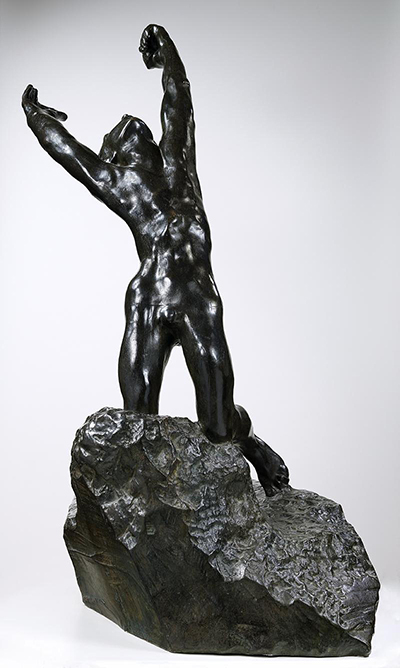Being an artist does not necessarily mean that your work should be painted or drawn in a portrait, sculptures too can be crafted to bring out an aspect of symbolism like the works of one of the best sculptors; Auguste Rodin. He takes a different direction in portraying his thoughts. With his love for nature, Rodin interprets life's force through well-crafted human form sculptures.
One look at the sculptures will not bring out the real thought behind the works, rather a deep interpretation of life's uncertainties. In his bronze sculpture of The Prodigal Son, the artist takes us back to the Biblical story of the man who had two sons. When his youngest son asked for his inheritance, he was given and went his way. After squandering all his wealth in lust, he had nothing left. Distressed and hungry, the only way was to go back home.
In this work of art, the Prodigal Son's anguish is evident; he had nothing, not even clothes. The arcing of his physique with arms lifted high and his face looking at the heavens, the young man is in despair, torment and in need of redemption. His kneeling is a sign of surrender; he has learned his lesson the hard way and is surrendering his life to his creator for heavenly mercies and pardon. Similarly, the dead substance he is kneeling on symbolizes the death of his past life and his yearning for a new beginning. Auguste Rodin's theme of Impressionism during the time he sculpted the image shows how life can be transformed when some important aspects are ignored. He is trying to bring out the biblical small story's interpretation in a very impressive and easy to understand form that can be understood by many people.
Concerning some of his other famous pieces including The Kiss, The Eternal Spring, The Three Shades and Bather Putting Up Her Hair, Rodin uses nude sculptures some inclining towards worldly passions and lust while some bring out his prowess as a sculptor of the human form. Some of the famous artists who followed this form or art and used their talents in sculpturing to bring out their thoughts in artistic pieces include James Earle Fraiser with his work The End Of The Trail and Fernando Botero's works La Maternidad and Torso de Muher. The Prodigal Son has most of its versions in several museums including New Wales Museum and Brooklyn Museum in the collection of the Gates Of Hell, though the original sculpture is thought to be in France.




